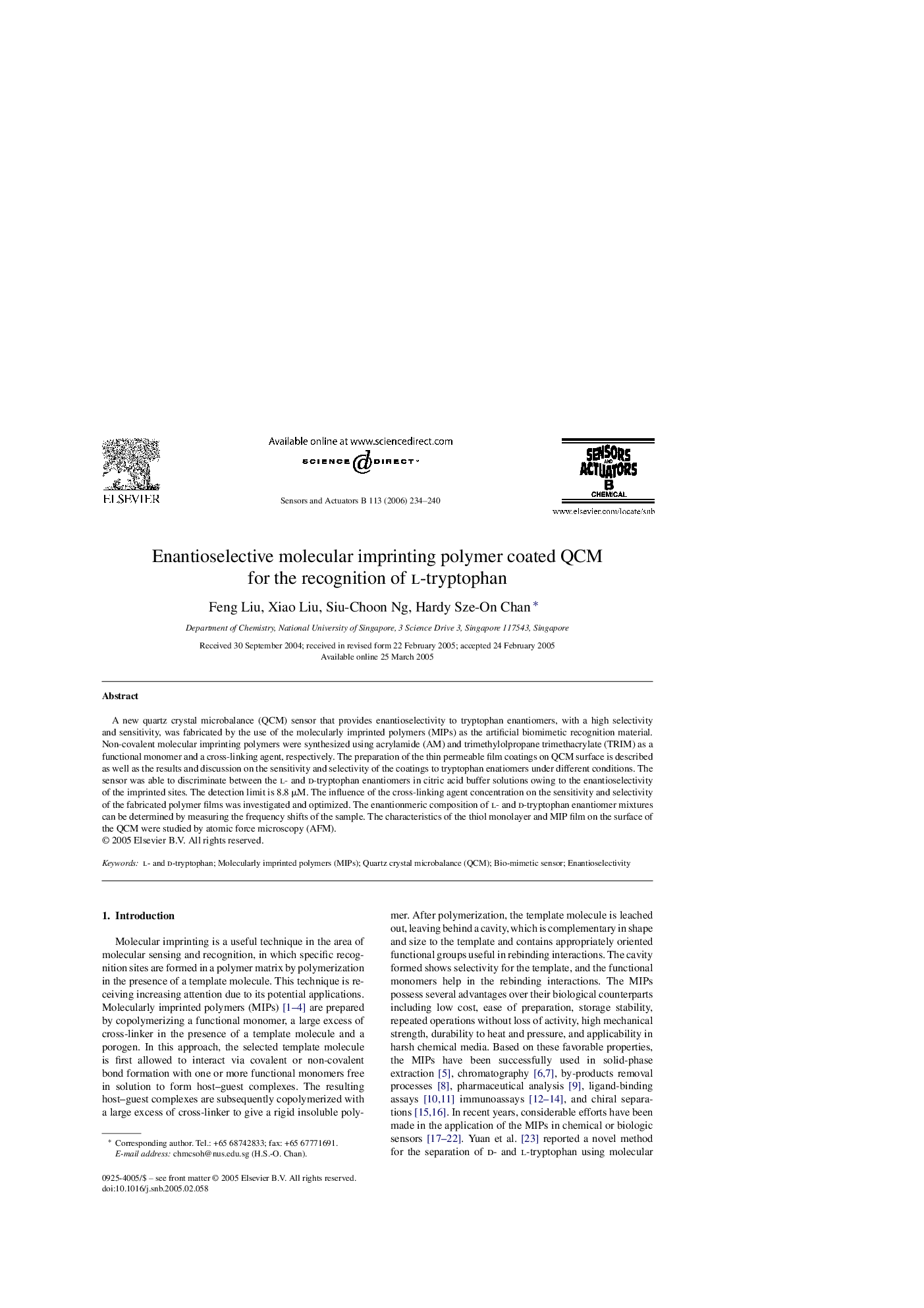| Article ID | Journal | Published Year | Pages | File Type |
|---|---|---|---|---|
| 745392 | Sensors and Actuators B: Chemical | 2006 | 7 Pages |
A new quartz crystal microbalance (QCM) sensor that provides enantioselectivity to tryptophan enantiomers, with a high selectivity and sensitivity, was fabricated by the use of the molecularly imprinted polymers (MIPs) as the artificial biomimetic recognition material. Non-covalent molecular imprinting polymers were synthesized using acrylamide (AM) and trimethylolpropane trimethacrylate (TRIM) as a functional monomer and a cross-linking agent, respectively. The preparation of the thin permeable film coatings on QCM surface is described as well as the results and discussion on the sensitivity and selectivity of the coatings to tryptophan enatiomers under different conditions. The sensor was able to discriminate between the l- and d-tryptophan enantiomers in citric acid buffer solutions owing to the enantioselectivity of the imprinted sites. The detection limit is 8.8 μM. The influence of the cross-linking agent concentration on the sensitivity and selectivity of the fabricated polymer films was investigated and optimized. The enantionmeric composition of l- and d-tryptophan enantiomer mixtures can be determined by measuring the frequency shifts of the sample. The characteristics of the thiol monolayer and MIP film on the surface of the QCM were studied by atomic force microscopy (AFM).
